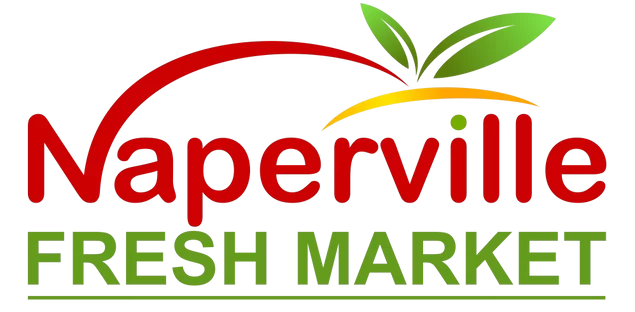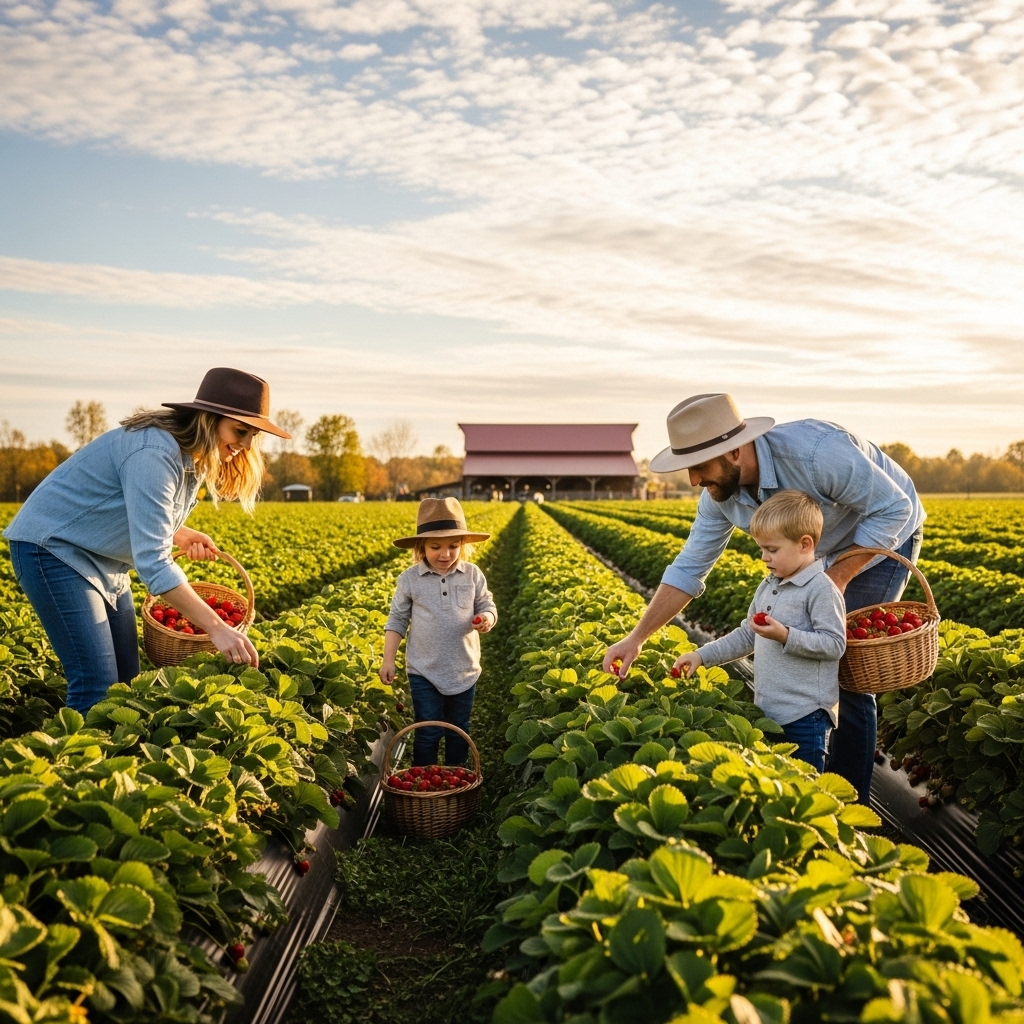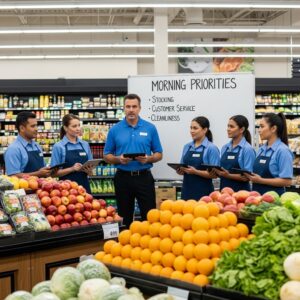Introduction: Exploring Organic Farms, CSA, and U-Pick Near Naperville
The Naperville area offers rewarding ways to connect with organic produce right at the source, from CSA programs that deliver regular shares to U-pick farms where you harvest with your own hands. Visiting fields, meeting growers, and following the rhythm of the season can transform how you shop, cook, and eat. If you are curious about building a plan that combines at-home convenience with farm experiences, start by browsing a thoughtfully curated lineup of organic produce to picture what your weekly meals might include alongside your farm adventures.
This guide explains how CSA programs work, what to expect from U-pick operations, how to choose farms that match your preferences, and how to plan storage, preservation, and meal prep around harvest days. You will also find safety tips, family-friendly strategies, and a seasonal overview that helps you time your visits for the best selection.
What Is a CSA and How Does It Work?
A Community Supported Agriculture (CSA) program connects households to a farm through a recurring share of the harvest. Members receive a weekly or biweekly box of seasonal produce, typically for a defined period during the growing season. Some CSAs offer swap options or add-ons like herbs, eggs, and flowers. Others are farmer-curated, celebrating the week’s abundance without customization. The value of a CSA lies in its cadence—you cook with what is truly in season, discover new ingredients, and support the growers who shape the regional food landscape.
Benefits of Joining a CSA
- Seasonal immersion: Your meals reflect the changing fields, from spring greens to fall roots.
- Freshness and flavor: Shorter time from harvest to kitchen enhances texture and taste.
- Culinary growth: Unfamiliar vegetables become new favorites through simple, adaptable recipes.
- Connection: You gain insight into how weather and soil shape your food.
When considering a CSA, review share sizes, pickup locations, delivery options, and schedule flexibility. Clarify how vacation holds work and whether the farm communicates weekly lists so you can plan meals in advance.
Understanding U-Pick Farms
U-pick farms invite you to harvest produce directly from the fields. Common offerings include strawberries, blueberries, apples, pumpkins, peppers, tomatoes, and flowers. U-pick experiences are ideal for families and anyone who enjoys the satisfaction of gathering food at its peak. Expect variable hours based on weather and ripeness, and always check daily updates before heading out.
U-Pick Etiquette and Best Practices
- Arrive early for the best selection and gentler temperatures.
- Respect field signs and staff guidance to protect plants and paths.
- Use containers approved by the farm and handle fruit gently to avoid bruising.
- Harvest only ripe produce; ask staff how to recognize readiness for each crop.
- Keep fields clean by taking trash with you and staying on designated rows.
Dress for the weather with closed-toe shoes, hats, and sun protection. Bring water and consider a small cooler in the car for the ride home during hot months.
How to Choose Farms That Fit Your Needs
Clarify your priorities. Do you want strictly organic certification, or are you open to farms that use organic practices without formal certification? Is your emphasis on berries, tomatoes, or fall harvest experiences? Do you prefer a farm with educational tours or a quieter spot for focused picking? Make a short checklist and reach out to farms with specific questions about schedules, crops, and policies.
Planning a Harvest Day
- Check crop updates and weather the night before. Confirm hours and payment methods.
- Pack essentials: hats, sunscreen, water, hand wipes, and appropriate containers.
- Plan your route, factoring in traffic and time for a quick snack break.
- Harvest with intention: choose ripe produce and avoid overfilling containers.
- Head home promptly and begin storage and prep within a few hours.
Build a basic meal plan that uses the most perishable items first. For example, strawberries and tender greens get priority, while sturdier vegetables can wait a bit longer.
Storage and Preservation After Farm Visits
After a U-pick or CSA pickup, wash and dry greens, refrigerate berries unwashed until serving, and store herbs upright in water. For larger hauls, plan preservation within 24 to 48 hours: freeze blueberries on trays, roast tomatoes into sauce, or pickle cucumbers and onions. Label containers with dates and varieties so you can track what you use and what lasts best in your kitchen.
Family-Friendly Strategies
U-pick trips can be engaging for children if you set clear expectations and build in mini breaks. Explain how to gently twist berries or tomatoes from plants, and make a game of finding the most perfectly ripe fruit. At home, assign age-appropriate tasks—washing, sorting, or labeling containers—to build ownership in the process. When kids help select and prepare produce, they are often more eager to taste it at the table.
Seasonal Overview for the Naperville Area
Spring brings spinach, lettuce, radishes, asparagus, and early herbs. Summer expands into strawberries, blueberries, cherries, tomatoes, peppers, cucumbers, zucchini, and sweet corn. Fall transitions to apples, pears, pumpkins, winter squash, kale, cabbage, and Brussels sprouts. Winter focuses on storage crops like onions and potatoes, cold-hardy greens, and citrus from warmer regions. This flow guides your planning for both CSA shares and U-pick scheduling.
Cooking Templates for Farm-Fresh Produce
- Sheet-pan roast: Combine one root vegetable, one fast-cooking vegetable, and an aromatic with olive oil and salt.
- Quick sauté: Start with garlic and onions, add greens, finish with lemon.
- Brothy soup: Build on a base of onions, carrots, and celery, then add your star vegetable and beans or grains.
- Chilled salad: Use crisp greens and herbs, add a seasonal fruit, and finish with nuts and a tangy dressing.
- Freezer kits: Slice peppers and onions, par-freeze on trays, and bag for fast weeknight meals.
Templates reduce decision fatigue and help you cook confidently even when your box includes new-to-you ingredients.
Mid-Season Momentum and Menu Inspiration
As the season peaks, you may juggle CSA shares, U-pick mornings, and occasional market runs. To avoid overwhelm, plan two anchor recipes per week, then fill gaps with simple sides and snack platters. If you need inspiration, skim a clean catalog of fresh organic produce to decide which items to prioritize in your next box or which crops to target on your next farm visit.
Food Safety on the Farm and at Home
Wash produce under running water before eating or cooking. Keep raw proteins separate from fresh produce, and sanitize coolers and containers regularly. On hot days, transport harvests promptly and avoid leaving produce in a warm car. If you are harvesting with children, bring wipes and ensure hand washing before snacking in the field.
Accessibility and Comfort Considerations
Ask farms about terrain, shade, and restroom access. If uneven ground is a concern, bring supportive footwear and plan shorter picking sessions. Some farms offer shaded rest areas or picnic spots—use these breaks to hydrate and plan your next row.
Community and Education
Many farms host workshops, tours, or volunteer days that teach planting, composting, and preservation skills. Participating deepens your understanding of seasonal rhythms and reinforces kitchen habits that reduce waste and improve flavor. Keep a small journal of what you picked, how you stored it, and which recipes you loved. These notes guide smarter choices next season.
Frequently Asked Questions
Q: How do I pick the right CSA size? A: Track your weekly produce use for two or three weeks. If you often have leftovers, start with a smaller share and scale up if needed. If you always run short, a larger share may fit your household.
Q: What if I cannot make a scheduled pickup? A: Ask about alternate pickups, vacation holds, or the option to donate your share. Clear communication prevents waste.
Q: How do I tell if fruit is ripe in the field? A: Ask staff for specific signs—color, aroma, and how easily fruit releases from the plant are common indicators.
Q: Are U-pick farms suitable for toddlers? A: Yes, with planning. Choose cooler hours, set clear rules, and bring snacks, water, and hats. Keep trips short and positive.
Q: How can I avoid waste after a large harvest? A: Prep immediately, freeze extras, and plan one catch-all meal weekly—stir-fry, soup, or frittata—to use remaining produce.
Bring the Farm to Your Table
Combining CSA shares with occasional U-pick visits can fill your kitchen with vibrant, flavorful ingredients all season long. Set a routine for storage and prep, learn a few flexible cooking templates, and keep notes on what your household loves most. When you need ideas for what to prioritize in your next box or which crops to seek on your next farm day, browse a refreshed mix of organic produce selection and sketch out two or three recipes you are excited to cook. With a little planning and a spirit of discovery, you will bring the field’s best flavors to your Naperville table week after week.




